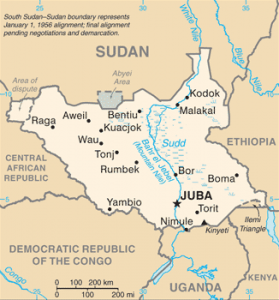Between late December 2015 and early May 2016, the National IHR Focal of South Sudan notified WHO of an outbreak of hemorrhagic fever syndrome.

As of 9 May, a total of 51 suspected cases, including 10 deaths, had been reported from the counties of Aweil North (45 cases, including 10 deaths) and Aweil West (6 cases). No health care workers had been reported among the cases. The majority (74.5%) of the suspected cases are below 20 years of age. The last recorded death dates back to 28 February.
The most frequent symptoms include unexplained bleeding, fever, fatigue, headache and vomiting. The symptoms do not seem to be severe and rapidly resolve following supportive treatment. Currently, there is no evidence of person-to-person transmission of the disease.
Samples of 33 patients were shipped to WHO collaborating centres in Uganda (Uganda Virus Research Institute), Senegal (Institut Pasteur of Dakar) and South Africa (National Institute for Communicable Diseases). The samples were tested by plaque reduction neutralization test, polymerase chain reaction or enzyme-linked immunosorbent assay. All samples were negative for Crimean-Congo hemorrhagic fever, Ebola virus disease, Marburg virus disease, Rift Valley fever, yellow fever, West Nile virus and Zika virus; 5 samples tested positive for Onyong-nyong virus; 3 samples were positive for Chikungunya; and 1 sample tested positive for dengue virus.
Further laboratory testing is ongoing that may confirm the causative agent. Other causes under investigation include bacterial diseases (e.g., Leptospirosis) and food intoxication (mycotoxines). Ecological risk factors for arboviral disease transmission were identified in the affected areas.
The laboratory results received so far do not explain the symptomatology (unexplained bleeding) of the reported cases nor the high mortality rate. Since the underlying cause of this public health event remains unknown, close monitoring and further epidemiological investigation is needed.
The area where the outbreak is occurring borders Darfur in Sudan where at least 469 cases of undiagnosed viral hemorrhagic fever, including 120 deaths, were reported between August and November 2015. Because of frequent population cross-border movement between Sudan and South Sudan, the risk of international spread of the disease cannot be ruled out.
Related:


One thought on “South Sudan hemorrhagic fever syndrome outbreak: Not yellow fever, cause remains elusive”